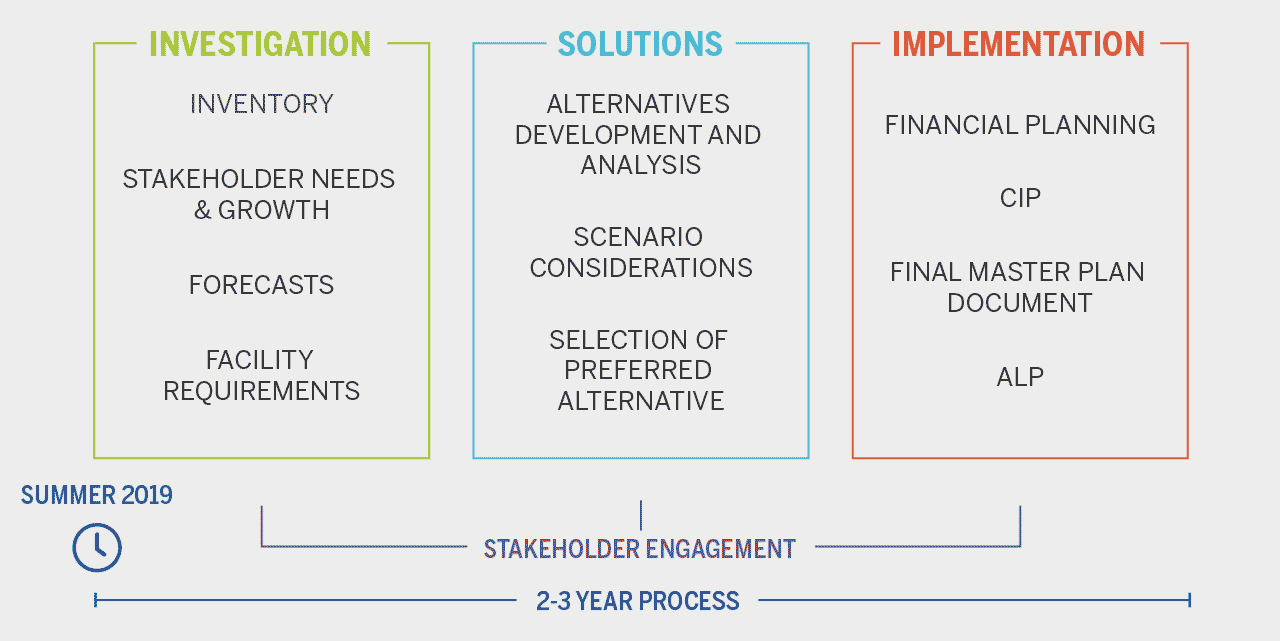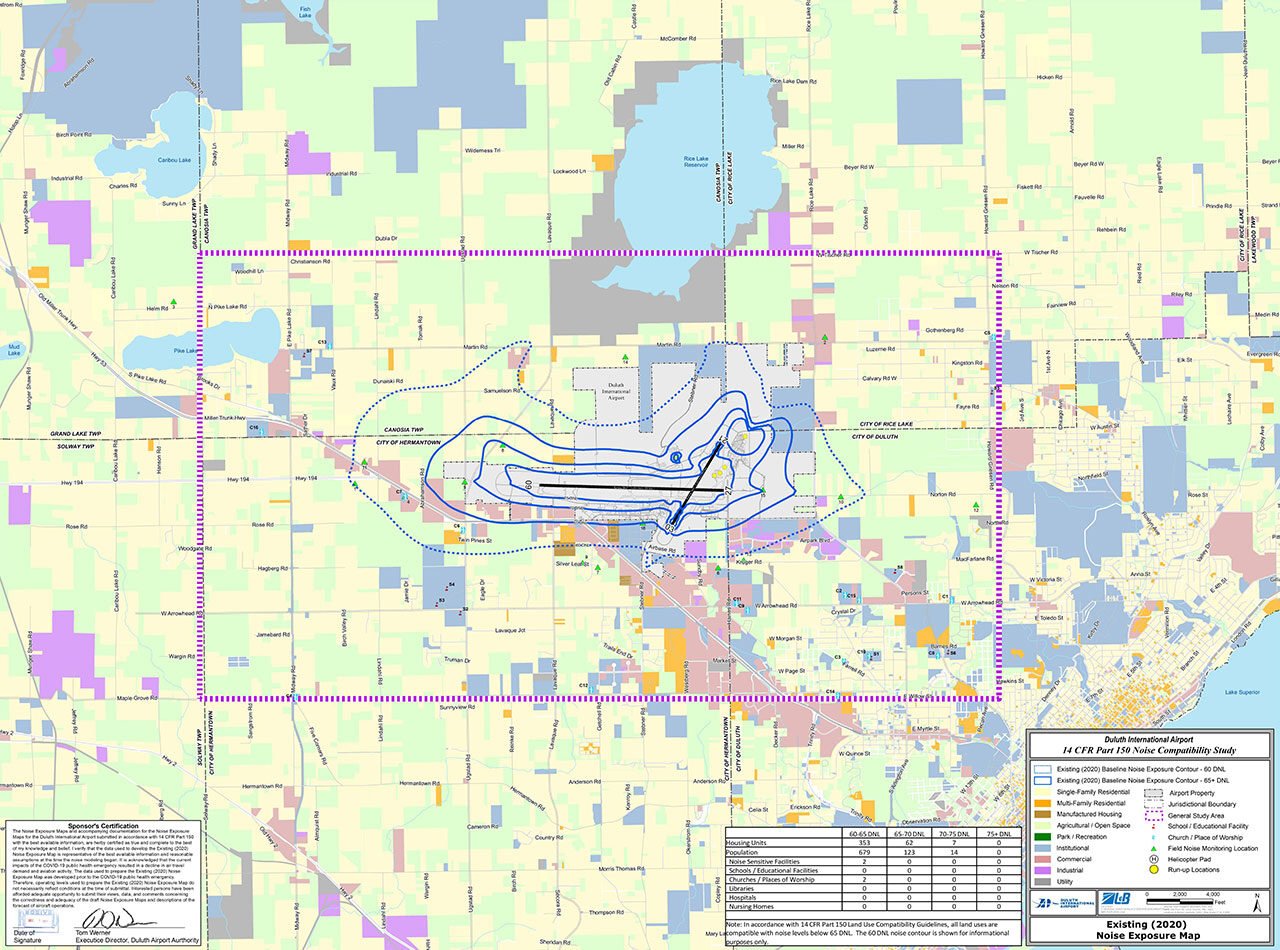Challenge
Duluth International Airport (DLH) is crucial to the region's economy, generating over $760 million annually, and supporting travel, tourism, jobs, and income for northern Minnesota. The Duluth Airport Authority (DAA) aimed to create a Master Plan to guide the airport's future. Key challenges included upgrading the taxiway network, building a new air traffic control tower, redeveloping building areas, and evaluating the future crosswind runway needs. The DAA sought to address aviation demand cost-effectively while considering environmental and socioeconomic impacts, meeting stakeholder needs, and ensuring infrastructure could support future growth.
Solution
SEH partnered with the DAA to develop the Vision 2040 Master Plan, outlining $175 million in improvements over 20 years. The plan aimed to achieve several key objectives:
- Support opportunities for business growth/relocation
- Anticipate future air service demand
- Better respond to the needs of general aviation
- Adapt to future challenges and opportunities
- Complement neighboring communities
- Maintain financial sustainability

Collaborative Planning: Engaging Stakeholders
Stakeholder engagement was central to the plan's development, with over 40 unique stakeholders involved through various methods. A Master Plan Advisory Committee, representing local government, airport users, businesses, political representatives, and the public, was developed to provide guidance throughout the process.
Additionally, Technical Advisory Committees (TAC) were developed to discuss and evaluate technical topics in detail. The TACs held over 16 meetings on specific issues like the taxiway network, air traffic control tower, Runway 3/21, and economic development.
Complementing the work of the TACs, SEH led a range of in-person and virtual stakeholder engagement, supported by a dedicated website, newsletters, and targeted project materials. These communication efforts were carefully tailored to diverse audiences, helping ensure transparency, address stakeholder needs, and integrate a broad spectrum of perspectives into the master plan process.
Master Plan Recommendations: Key Upgrades
The Master Plan identified key infrastructure improvements for DAA to achieve the Vision 2040. The process evaluated all aspects of airside and landside infrastructure. The DAA completed the comprehensive Duluth International Airport (DLH) Vision 2040 Master Plan in parallel with a Part 150 Noise Study, also led by SEH, to continue positioning DLH for ongoing improvements. Several assessments were completed to support the planning efforts, including building condition assessments, an architectural history reconnaissance survey, passenger boarding bridge assessments, and a landside pavement condition assessment.
Key recommendations of the Master Plan included the construction of a new air traffic control tower, significant taxiway network improvements, development and redevelopment of building areas, and extending Runway 3/21 to 8,000 feet. These enhancements promise to ensure both short- and long-term infrastructure development.
To guide the DAA in executing the over $175 million in improvements, a financial implementation plan was created. This plan included eligibility determination for near-term projects, funding sources, and evaluating the financial feasibility from a local sponsor perspective.

Now, Duluth International Airport is set to continue its vital role in meeting aviation needs and driving economic growth in the region.
Awards
- 2022 Outstanding Leadership in Airport Planning, Environment and Strategic Initiative | Minnesota Council of Airports (MCOA)
Project
Duluth International Airport Vision 2040 Master Plan
Location
Duluth, Minnesota
Client
Duluth Airport Authority
Features
- Activity forecasts
- Building Condition Assessments
- Pavement condition assessments
- Airport Layout Plan and Exhibit A Property Map
- Extensive stakeholder engagement involving 40 different stakeholders/entities
- Involvement of over 16 Technical Advisory Committees (TAC)
- Developed plan to implement $175 million in improvements over the next 20 years
Services
- Airport planning and design
- Environmental
- Transportation planning
- Survey
- Funding

.png?width=113&name=SEH_Logo_RGB%20(1).png)
